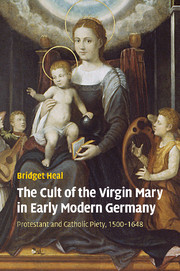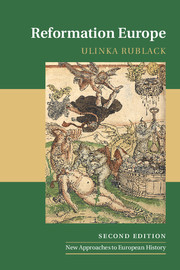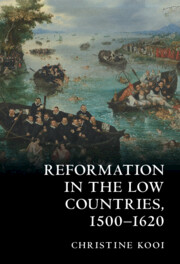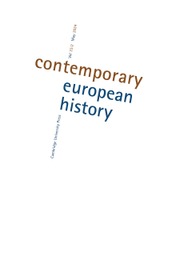The Cult of the Virgin Mary in Early Modern Germany
What happened to the fervent Marian piety of the late Middle Ages during Germany's Reformation and Counter-Reformation? It has been widely assumed that Mary disappeared from Protestant devotional life and subsequently became a figurehead for the Catholic Church's campaign of religious reconquest. This book presents a more finely nuanced account of the Virgin's significance. In many Lutheran territories Marian liturgy and images - from magnificent altarpieces to simple paintings and prints - survived, though their meaning was transformed. In Catholic areas baroque art and piety flourished, but the militant Virgin associated with the Counter-Reformation did not always dominate religious devotion. Traditional manifestations of Marian veneration persisted, despite the post-Tridentine Church's attempts to dictate a uniform style of religious life. This book demonstrates that local context played a key role in shaping Marian piety, and explores the significance of this diversity of Marian practice for women's and men's experiences of religious change.
- An ambitious, interdisciplinary study of the changing attitudes to Mary as a religious symbol in post-Reformation Germany
- Heavily illustrated with images ranging from magnificent altarpieces to paintings and prints
- Will appeal to scholars working on early modern European history, early modern Germany, religious history, art history and Reformation studies
Reviews & endorsements
'… a nuanced account of Mary's significance for Lutheran and Catholic circles in the Holy Roman Empire during the Reformation.' H-Net
'Bridget Heal's Cult of the Virgin Mary in Early Modern Germany provides readers with a fascinating examination of the tenacity of Marian devotion and diversity of religious life in early modern Germany. Situating her analysis of both archival and artistic sources within the distinctive historical and theological currents that shaped the religious experience of townsfolk in her three cities, Heal demonstrates the variety of Marianism in both Protestant and Catholic territories. Enriched by more than sixty evocative images of Marian artworks from throughout the Empire, analyzed with a keen eye for their historical significance, this work represents a valuable contribution to the literature on religious culture in early modern Germany.' Central European History
'The text is accompanied by well-chosen, mostly unfamiliar images and concludes with an excellent index with plenty of thematic entries which makes this important study highly user friendly.' Journal of Ecclesiastical History
'Heal's work will be a valuable resource for scholars in art history, gender studies, the history and theology of the Reformation, and the intersection of politics and religion in Renaissance and Early Modern Europe.' German Quarterly
Product details
November 2014Paperback
9781107449947
358 pages
229 × 152 × 19 mm
0.48kg
Available
Table of Contents
- Introduction
- 1. Transformations in Marian teaching
- 2. Marian piety in Lutheran Germany
- 3. Confessional frictions and the status of the Virgin
- 4. The Counter-Reformation cult
- 5. Catholic pluralism and Cologne
- 6. Marian devotion and gender
- Conclusion
- Bibliography
- Index.









